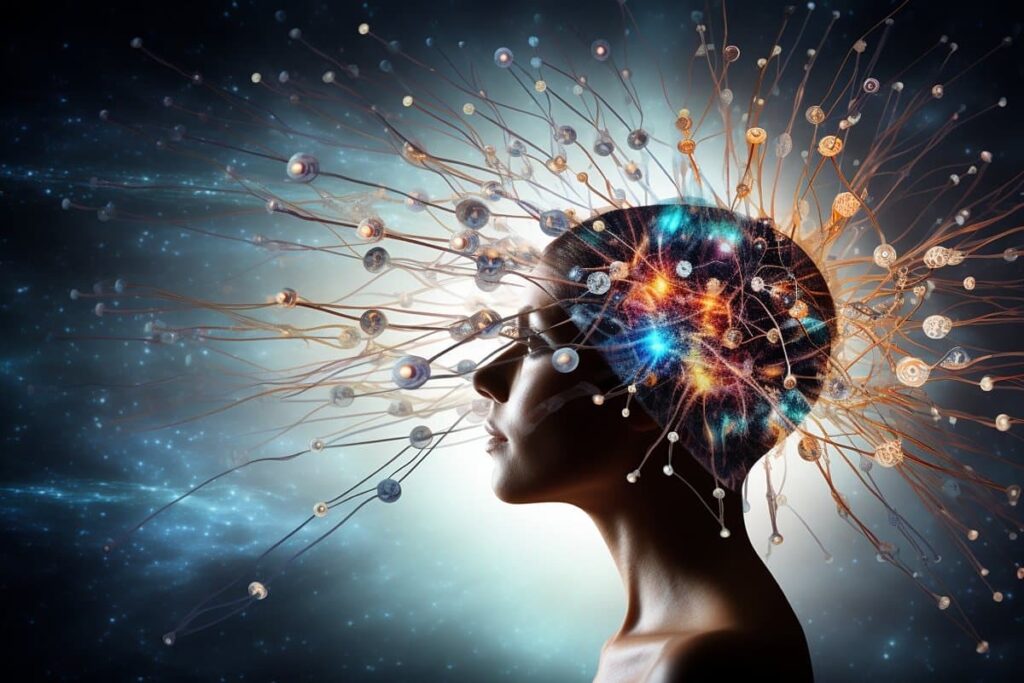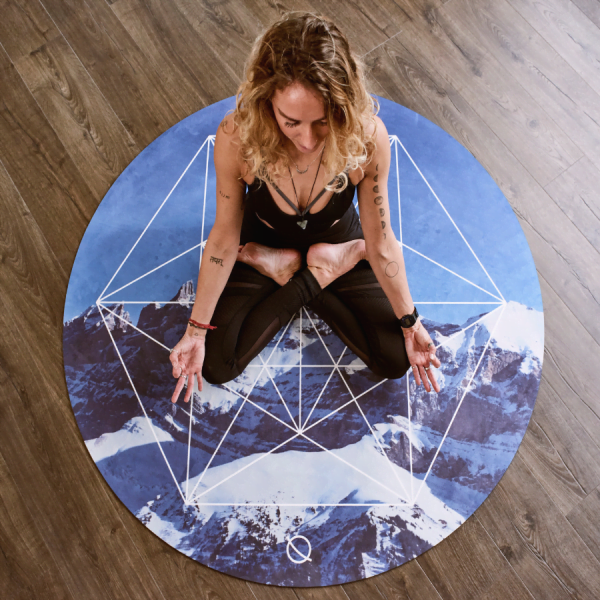
Have you ever felt a sudden rush of fear, with your heart racing and your breath becoming shallow? Or perhaps you’ve experienced persistent worry, with thoughts swirling endlessly in your mind, leaving you helpless.
Enter hypnotherapy, a trance-like state in which a person is more open to suggestions that can help them change certain behaviours, thoughts, or feelings. It’s often used to help with issues like quitting smoking, losing weight, managing pain, or reducing stress and anxiety. In this blog post, we’ll understand the nature of anxiety, uncover the components of anxiety sensations, and discuss its profound impact on daily life.
Understanding anxiety from various perspectives provides a comprehensive view of its impact on individuals. Each perspective—psychological, neuroscience, and nervous system—offers unique insights into how anxiety appears and affects a person’s life. These perspectives collectively highlight the intricate interplay between mind and body, illustrating how thoughts, brain functions, and physiological responses contribute to the experience of anxiety.
So, let’s look at the different perspectives of anxiety:
From a psychological perspective, anxiety is characterised by pervasive feelings of worry, fear, and unease. It often involves persistent and intrusive thoughts about potential dangers or adverse outcomes, even when no immediate threat exists. These cognitive patterns can lead to hyper-vigilance, where the mind is constantly on high alert, scanning for signs of trouble. This relentless mental activity can interfere with daily functioning, making it difficult to concentrate, make decisions, or enjoy life.
From a neuroscience perspective, anxiety is rooted in the brain’s complex network of neural circuits. Key regions involved include the amygdala, which regulates anxiety processes, fear and emotional responses, and the prefrontal cortex, which is responsible for decision-making and regulating emotional reactions. In individuals with anxiety, the amygdala may be hyperactive, while the prefrontal cortex may struggle to exert control, leading to heightened and prolonged anxiety responses. Neurotransmitters like serotonin and gamma-aminobutyric acid (GABA) also play essential roles in modulating anxiety levels, with imbalances contributing to the persistence of anxiety symptoms.
From a nervous system perspective, anxiety triggers the activation of the sympathetic nervous system, which is responsible for the body’s ‘fight-or-flight’ response. This activation releases stress hormones such as adrenaline and cortisol, which prepare the body to respond to perceived threats. Chronic activation of the sympathetic nervous system due to ongoing anxiety can lead to wear and tear on the body, contributing to long-term health issues like cardiovascular problems and weakened immune function.
Understanding the diverse nature of anxiety through psychological, neuroscience, and nervous system perspectives provides a comprehensive foundation for recognising its complex impact on individuals. Each perspective offers unique insights into how anxiety affecting thoughts, brain functions, and physiological responses. This holistic understanding sets the stage for exploring the specific components of anxiety sensations.
So, what does anxiety feel like? Components of anxiety sensations have a wide range of emotional, physical, and cognitive symptoms that intertwine to create a challenging and often debilitating experience. Understanding these components can help in recognising anxiety and seeking appropriate support and treatment.
So, first of all, let’s look at the emotional turmoil.
Overwhelming Fear: Anxiety can flood the mind with intense fear, creating a constant sense of threat that makes even simple, everyday tasks seem daunting and overwhelming. This overwhelming fear can manifest suddenly and intensely, leaving you feeling as though you are in immediate danger, even when there is no apparent external cause. This irrational and pervasive fear can paralyse decision-making and hinder daily activities.
Persistent Worry: One of the defining features of anxiety is persistent worry. This worry is often centred around future events or past actions and can be disproportionate to the actual situation. You may obsess over worst-case scenarios or potential adverse outcomes, leading to constant tension and unease. This persistent worry is often accompanied by a generalised sense of impending doom, where you feel that something terrible is bound to happen at any moment.
Sense of Impending Doom: Many people suffering from anxiety describe a pervasive feeling that something catastrophic is about to occur. This sense of impending doom can be debilitating, as it is not tied to any specific threat or situation. Instead, it creates a constant state of hyper-vigilance and dread, making it difficult to relax or enjoy life. This sensation can intensify the fear and worry already present, creating a vicious cycle of anxiety.
After the emotional turmoil, then comes the physical symptoms of anxiety.
Rapid Heartbeat: When anxiety strikes, the body’s natural fight-or-flight response is activated, including an increased heart rate. This rapid heartbeat is a physiological reaction that prepares the body to deal with perceived threats. However, in the context of anxiety, this reaction occurs without an actual physical threat, leading to feelings of panic and unease. The sensation of a pounding or racing heart can be frightening and may exacerbate feelings of anxiety.
Sweating and Trembling: Anxiety often triggers the release of stress hormones like adrenaline, which can cause physical symptoms such as sweating and trembling. These responses are part of the body’s effort to prepare for a potential threat, but they can feel out of place and distressing in the absence of real danger. Sweating and trembling can occur suddenly and intensely, further contributing to the discomfort and fear associated with anxiety.
Shortness of Breath: Many people with anxiety experience shortness of breath or a sensation of being unable to catch their breath. This can be due to the body’s heightened state of arousal and the increased demand for oxygen during the fight-or-flight response. The sensation of breathlessness can be particularly alarming, often leading to feelings of panic and exacerbating the overall sense of anxiety.
The physical symptoms of anxiety lead to cognitive effects.
Racing Thoughts: Anxiety can lead to a flurry of rapid, uncontrollable thoughts. This mental state makes it challenging to focus on one thing at a time as the mind jumps from one worry to another. Racing thoughts can be overwhelming and exhausting, preventing you from relaxing or finding mental peace. This constant stream of anxious thinking can disrupt daily routines and make it difficult to accomplish tasks.
Difficulty Concentrating: The cognitive overload caused by racing thoughts can lead to difficulty concentrating. Anxiety consumes a significant amount of mental energy, making it hard to focus on tasks, follow conversations, or complete work. This impaired concentration can affect productivity and performance in various areas of life, from professional responsibilities to personal interactions.
Irrational Fears: Anxiety may produce irrational fears or phobias that go beyond typical worries. These fears are often disproportionate to the risk involved and can lead to avoidance behaviours. For example, someone with an irrational fear of flying might avoid air travel altogether, even if it means significant inconvenience. These irrational fears can severely impact daily life, limiting experiences and opportunities.
Anxiety doesn’t just reside in mind; it seeps into every corner of life, altering how you engage with the world around you. Some of the impacts of anxiety on daily life are:
Anxiety has a broad spectrum of emotional, physical, and cognitive experiences that profoundly affect those who live with it. I am sure after reading this blog, you have a better understanding of how anxiety feels like. Enhancing your understanding of anxiety, combined with personalised hypnotherapy, opens the gateway to the powerful subconscious mind where the problem often lies. By bypassing the conscious mind, hypnotherapy can effectively address various psychological and physical issues, providing targeted relief and overall mental well-being.
Book a Free Consultation with our Clinical Hypnotherapist and take the first step towards a healthier, more peaceful life today.

Master Your Mind, Master Your Life
Our Hypnotherapists are dedicated to help people to harness the power of the mind and
feelings, so that we can reach our true potential and be the best version of ourselves.
Benson House, Suite 1/2 Benson St Toowong, QLD 4066
2023 Make It Happen Hypnotherapy, Registered in Queensland, Australia
Registered Address: Suite 1, 2 Benson Street, Benson House, Toowong, Brisbane, QLD, 4066 Australia

Our Clinical Hypnotherapists will guide you into a state of trance similar to daydreaming. By working with your subconscious mind, we will find out the underlying causes of your emotional suffering, and establish desired outcomes for you. To achieve this, we will use various techniques like Inner Child Therapy, Regression, Parts Therapy, Gestalt Therapy, Rewind Technique, and more.